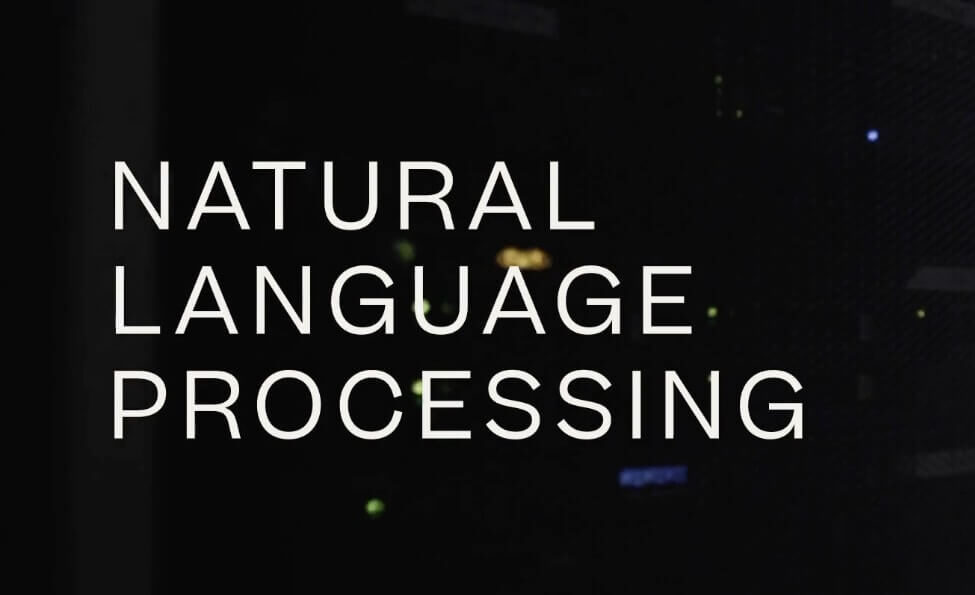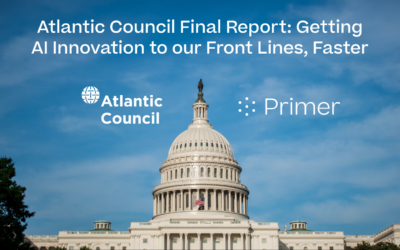Natural Language Processing (NLP), a subfield of Artificial Intelligence (AI), aims to facilitate computers in comprehending, analyzing, and manipulating human language. NLP problems can be solved using machine learning (ML) techniques, which involve training models on large amounts of data and using statistical algorithms to make predictions.
However, NLP differs from other ML problems in several ways, which makes it unique and more challenging. For example, language is inherently ambiguous, and the meaning of a sentence can change based on context, tone, and cultural nuances. NLP models must account for these complexities, which can be challenging.
As more ML practitioners enter the NLP arena for the first time, they may encounter some specific nuances. For example, ambiguity and diversity of natural language, selecting appropriate preprocessing techniques, need for domain knowledge, etc. In addition, NLP models require significant amounts of labeled data, which can be expensive and time-consuming to obtain.
This article explains nuances that ML decision-makers and practitioners may face when working on NLP problems and provides possible solutions to help them tackle these challenges. By understanding these nuances, ML engineers can develop more effective NLP models to help businesses extract insights from their unstructured text data and improve customer engagement. So let’s begin with the first nuance.
Textual Data is Ambiguous and Context-Dependent
Machine learning (ML) practitioners who have never worked with natural language processing (NLP) systems should know that language data differs from other types of data. While tabular, sequential, and image data are typically discrete, deterministic, and fully observable, textual data is highly ambiguous and context-dependent. This means that the meaning of a sentence can vary depending on the context in which it is used and that understanding the meaning of language often requires understanding the relationships between different words and phrases.
One simple example of ambiguity in textual data is the use of pronouns “he,” “she,” and “it” as they can cause ambiguity in the absence of proper context, as they depend on a previously mentioned or implied entity. For example, consider the sentence, “John told Tom that he was busy.” This sentence makes it unclear whether “he” refers to John or Tom, as both names are mentioned.
To address the ambiguity of textual data, ML practitioners should use context-aware techniques, such as contextual word embeddings and pre-trained language models, to understand how words are used in different contexts. They should also leverage techniques like named entity recognition, part-of-speech tagging, and dependency parsing to identify the structure and relationships within a sentence, which can help disambiguate words and phrases.
Challenges of Preprocessing Textual Data
Preprocessing textual data can be challenging, as there are numerous factors to consider, such as the type of task, the quality of the dataset, and the model to be trained. Unlike other machine learning problems, there is no standard preprocessing approach for natural language data, and the steps involved can vary greatly depending on the specific use case. In some cases, you may not need to perform any preprocessing, as advanced transformer models can often understand the text without requiring extensive preprocessing. However, for more basic NLP approaches, it is often necessary to perform basic preprocessing steps such as tokenization, stemming, lemmatization, stop word removal, etc.
Additionally, the type of textual data can influence the required preprocessing steps. For example, when processing tweets, you may need to replace actual URLs with the word “URL” and mentions with the word “Mention” to better represent the information in the tweet. Ultimately, the choice of preprocessing steps will depend on the specific task at hand, the quality of the dataset, and the model being used. It is essential to carefully consider these factors and experiment with different preprocessing techniques to determine the best approach for a particular NLP task.
Good Luck with the Availability of Annotated Data
Textual data can be unannotated and annotated. Unannotated data refers to raw text that has not been labeled or assigned tags, while annotated data is labeled text that has been categorized or tagged for a particular task. Daily, various sources such as social media, blogs, and news websites generate vast raw textual data. However, most of this data is not labeled, which limits its usability for supervised machine learning algorithms.
Manual data annotation is an expensive process and time-consuming process. It requires the involvement of human annotators to label the data with relevant tags or categories. In addition, the quality of the annotated data may not always be up to the mark, which can lead to inaccuracies in NLP tasks. This is a significant bottleneck in training supervised machine learning algorithms for textual data.
ML engineers should know semi-supervised learning techniques for textual data, such as pseudo-labeling, to overcome the bottleneck of limited labeled data. By leveraging the large amounts of available unlabeled data and using semi-supervised learning techniques, it is possible to develop accurate and effective NLP models without incurring the cost and time associated with manual data annotation.
Overcoming the Challenge of Language Diversity
There are over 7,000 languages spoken today, which means that NLP tasks must be tailored to specific languages, making the task even more complex. To overcome this challenge, ML engineers should be familiar with the preprocessing steps and toolsets available for each language. This includes language-specific models, as well as multi-language models. Language-specific models are tailored to a particular language and offer higher accuracy and precision in NLP tasks.
For example, Flaubert and CamemBERT are pre-trained language models that are specific to the French language, while Roberta is a pre-trained language model that is specific to the English language. On the other hand, multi-language models can work with multiple languages and are more flexible in their approach. They can be used for a wide range of NLP tasks and are more useful for multilingual applications. For example, the Multilingual Universal Sentence Encoder (MUSE) is a pre-trained model that can handle 16 languages, making it suitable for multilingual NLP tasks.
The preprocessing steps in NLP can also differ from language to language. This is because different languages have different sentence structures, grammatical rules, and writing systems, which can affect how text is processed and analyzed. For example, Chinese and Japanese text often lack spaces between words, which makes it difficult to segment the text into words. In Arabic and Hebrew, the script is written from right to left, affecting how the text is processed and analyzed.
The Need for Domain Knowledge in NLP
Domain knowledge is crucial for building accurate and reliable ML models. However, this becomes even more important in natural language processing (NLP) since it is a highly interdisciplinary field that combines expertise in computer science, linguistics, and other fields. This can present a challenge for ML engineers working on NLP tasks, as it may require specialized knowledge beyond traditional machine learning techniques. One area where this is particularly relevant is in the creation of domain-specific NLP models.
For example, if you are working on a text classification task in the legal domain, you may need to understand the nuances of legal language and terminology. This is where the expertise of a linguist or subject matter expert can be invaluable. They can provide insights into the specific language used in the domain and help identify relevant features and labels for the classification task.
One possible solution for this challenge is forming interdisciplinary teams that include ML engineers and domain experts. However, hiring domain-specific experts could be expensive. Another alternative is to seek out resources such as domain-specific datasets and pre-trained models, which can reduce the need for extensive domain knowledge. Some examples of domain-specific language models are, BioBERT, a biomedical language model trained on PubMed abstracts and full-text articles; ClinicalBERT, an NLP model designed to analyze clinical notes and electronic health records; LegalBERT, a large corpus of legal documents that can be used for legal text analysis.
Hugging Face is a popular resource for finding and using pre-trained language models, and it provides a wide range of models for various NLP tasks, including BERT, GPT-2, and more. TensorFlow Hub is another resource that provides pre-trained models for various tasks such as text embedding, image classification, and more. Other resources, such as OpenAI and AllenNLP, also offer pre-trained models and resources for various NLP tasks.
NLP Frameworks and Hardware Choices
Selecting the appropriate NLP framework and hardware is crucial for ML engineers entering the NLP arena. There are several factors to consider when selecting an NLP framework, such as the type and complexity of the task, hardware requirements, community support, and documentation.
Some frameworks, such as spaCy and NLTK, are suitable for simple tasks such as text preprocessing, tokenization, and part-of-speech tagging. On the other hand, frameworks like TensorFlow and PyTorch are suitable for more complex NLP tasks like machine translation, text generation, text classification, and other tasks that require training deep learning models.
Hardware requirements are another vital consideration in selecting an NLP framework. For instance, TensorFlow and PyTorch can utilize GPU acceleration, which helps train neural networks faster, making them well-suited for more massive NLP projects. If you are working on smaller projects or laptops, frameworks like spaCy and NLTK can be a better choice.
It’s essential to choose the appropriate level of complexity and toolset for the specific NLP problem. It’s like the old saying goes: “Don’t shoot an ant with a gun.” Sometimes simpler tools, like rule-based approaches or algorithms, can be effective and efficient for simpler NLP tasks. However, specialized frameworks and hardware can significantly affect performance and accuracy for more complex NLP tasks.
Storage and Memory Constraints
Natural Language Processing (NLP) models are becoming increasingly complex and require significant resources to store and train. As a result, ML engineers need to be aware of the storage constraints associated with these models. For instance, language models can be enormous, such as the BLOOM model with 176 billion parameter, which requires substantial memory and hard disk space to store.
Therefore, knowing how to store and fine-tune these models in memory efficiently is essential. ML engineers should be familiar with batching techniques, which enable training large models with limited resources. By dividing the input data into smaller batches, it becomes possible to process it sequentially, minimizing the amount of memory required to store the model’s parameters.
Another way to handle the storage constraints of NLP models is to use cloud-based platforms that provide access to pre-trained models. These platforms allow ML engineers to use models without storing them on their local machines. However, it is important to be aware of the limitations of these platforms, such as the amount of available memory and the processing speed.
The Bottom Line
ML decision-makers and practitioners working on NLP problems must navigate challenges related to textual ambiguity, preprocessing, lack of annotated data, language diversity, and domain knowledge.
To overcome these challenges, ML engineers must leverage the latest NLP frameworks and hardware and adopt best practices for storing and managing large amounts of data. Additionally, it is important for machine learning engineers to have a solid understanding of which tool to use for which NLP problem and whether to train a model from scratch or fine-tune an existing one. This decision should be based on the available resources, the type and complexity of the problem, and the desired performance metrics.
Overall, the key takeaway from this article is that NLP requires a unique set of skills, tools, and techniques that are different from other ML problems. By understanding and addressing the nuances of NLP, ML decision-makers and practitioners can build more effective models and systems that can provide valuable insights and automation for a wide range of industries and applications.
At Primer, we build and deploy mission-ready AI applications that meet rapidly evolving defense and security needs. Check out our products and resources, or contact us to learn more.



